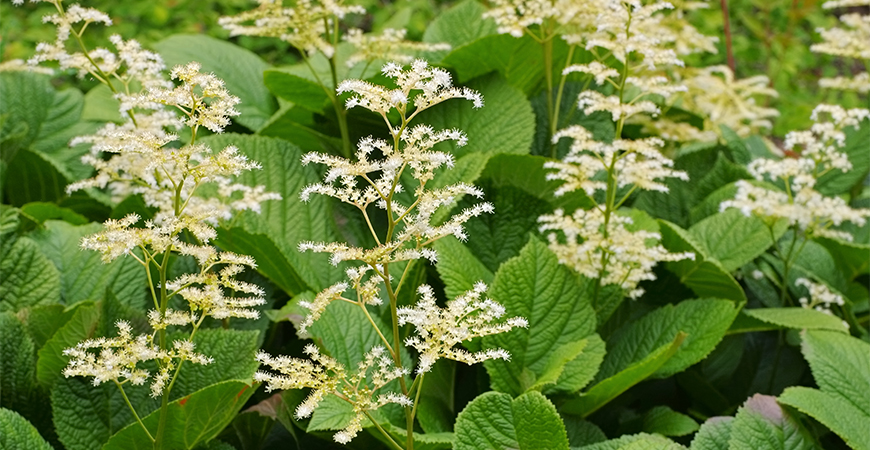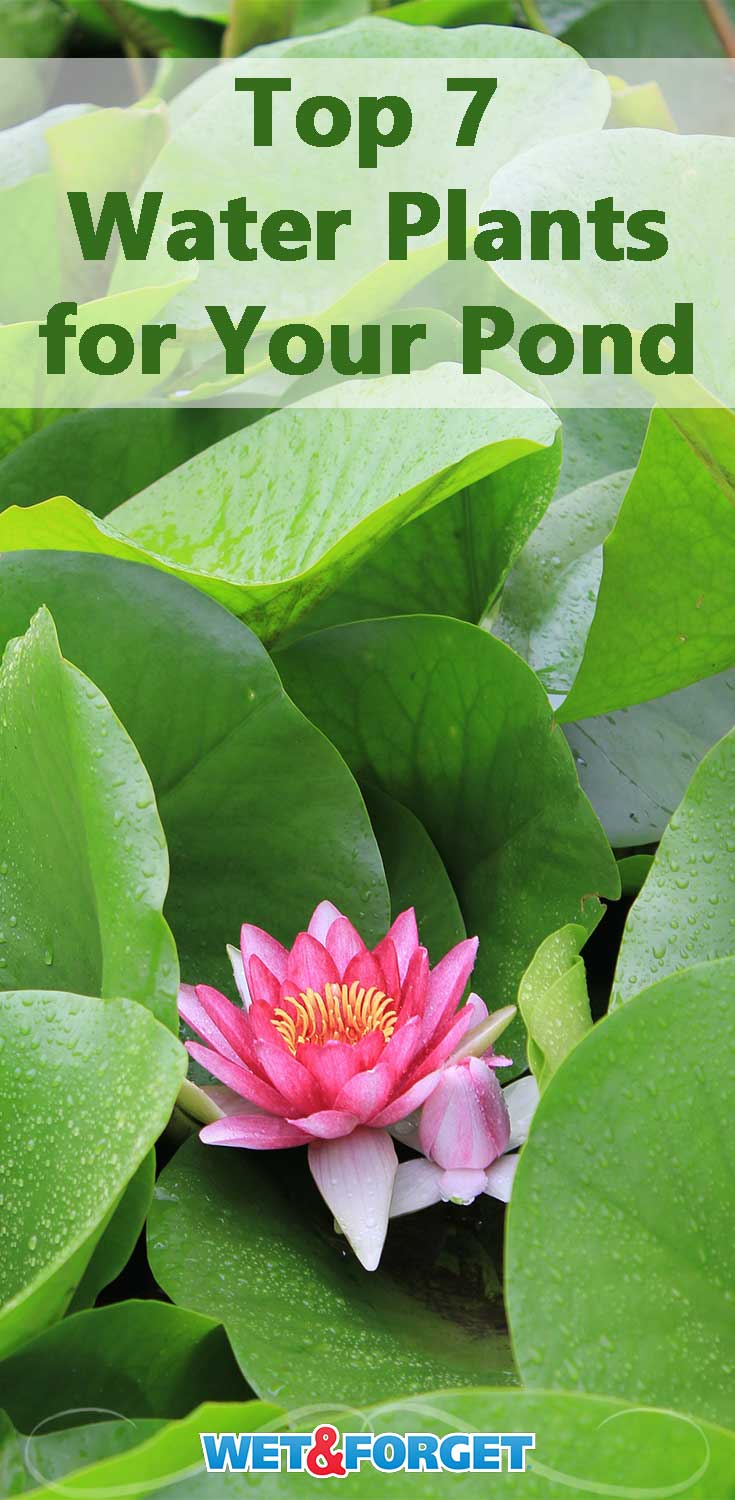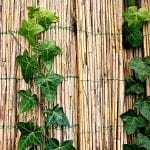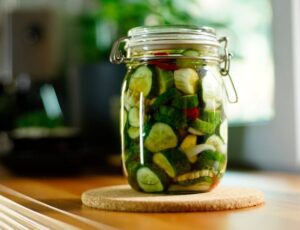
Water Plants: How to Add Flora to Your Pond
A backyard pond serves as a welcome focal point in the garden, especially when it includes colorful plants and fish. And the soothing sound of moving water is a bonus. Here we’ll cover the best water plants for ponds and how to create a relaxing backyard oasis for your family and friends to enjoy.
What plants grow in pond water?
There are five categories of aquatic plants that thrive in any size pond. Choose one or two of these pond plants to create your backyard retreat.
Bog plants thrive in much wetter conditions than most plants prefer.
Deep-water plants are potted and then sunk to the bottom of the pond.
Floating plants do not require soil as they take in nutrients from the water.
Submerged plants are submerged underneath the water.
Marginal plants roots can grow in either water or soil.
What are the most popular water plants?

Water Lily (deep-water plant)
This flowering pond plant is one of the most recognizable due to its lotus-like blooms and round lily pads that float on the surface. You’ll often find small fish using a lily pad to shelter from the sun. Lily pads also provide a resting spot for frogs and dragonflies. Water lilies originate from temperate and tropical climates.
How does a Long Stem Attach the Pads in Water?
A long stem attaches the pads to the pot of soil set at the bottom of the pond. The flowers float on the water’s surface, suspended on thin stalks. Water lilies may be planted in containers and then sunk into the pond, or plant rhizomes may be buried in the soil at the bottom. Water lilies prefer to grow in water that is a depth of 18 to 24 inches.

Rodgers Flower (Bog Plant)
Rodgers flower rewards pond visitors with views of attractive flower spikes and abundant foliage. This pond perennial is taller than other aquatic plants (3 to 4 feet), so placing it as a backdrop to shorter plantings is a good idea. Light pink flowers appear on large plumes in late spring. The leaves are large and feel coarse to the touch. In spring, bronze-colored leaves appear. They gradually turn to green in summer, followed by reddish-bronze in fall—Plant Rodgers flower at the edge of a landscape pond or water feature.

Horsetail Rush (Bog Plant)
Horsetail rush is a reed-like perennial that quickly grows and spreads into dense stands, growing to 3 ft. This plant doesn’t produce flowers, but the cylindrical green stems show attractive black-green bands. Dragonflies are often seen perched on a branch. Horsetail rush is often grown in Japanese-style gardens and is best planted at the water’s edge. Horsetail rush will quickly spread, so it’s best to plant it in pots.
What plant types grow best at the edge of a pond?

Ornamental grasses gently wave in the wind making lovely reflections in the water. They make a beautiful accent plant next to a pond. Consider planting zebra grass or Hakone grass at the water’s edge.

Zebra Grass is a striking perennial grass that displays yellow-striped foliage on slender, arched leaves. In autumn, the leaves turn a deep gold color and then gradually turn to a soft tan in winter. This distinctive ornamental also displays pinkish-copper plumes in late summer, which turn to silver in fall. Zebra grass grows in a compact, gently arching clump and grows to 7 ft. in height and 4-6 ft in width. This attractive plant stands out next to a backyard pond and provides plenty of winter interest.

Hakone Grass, sometimes referred to as Japanese forest grass, is a hardy annual plant with colorful foliage in varied shades of chartreuse, yellow, orange, and apricot. This attractive ornamental grows in loose, gracefully arching mounds to 2 to 3 ft. The foliage color can range from green to bright gold in summer to orange and copper in autumn. Hakone grass is popular for its bright color, texture, and multi-season beauty.

Cardinal Flower
This flowering perennial plant features showy red blooms and dark green foliage. The plant’s name comes from the bright red robes worn by roman catholic cardinals. This excellent pondside plant looks good, and its sweet nectar attracts butterflies and hummingbirds. Bright red tubular flowers bloom from July to October on long, slender spikes making this plant a colorful addition to a backyard pond. The cardinal flower prefers damp locations and grows well along ponds and streams.
Are some pond plants invasive?
While many native aquatic plants work well in or at the pond’s edge, some non-native tropical varieties can be invasive, particularly in mild climates. Tropical pond plants are sold at garden centers for planting in or near ponds or water features. When controlled, these plants are fine. However, if they are allowed to migrate into natural ponds, lakes, or streams, they can overtake native species and affect the balance of the water ecosystem. Enjoy your tropical pond plants, but keep their growth by planting in pots, hand trimming, or another containment method. Or choose only non-invasive plants such as:
- Yellow pondlily
- Water poppy
- Fanwort
- Canadian pondweed
- Water lilies
- Cape pondweed
- Water fern
- Water clover
What are the best water plants for a koi pond?
There are various water plants to choose from for your koi pond. Aside from each plant listed above, you can also pick a few from the list below to add extra life and color to your koi pond.
- Water lettuce
- Water hyacinth
- Blue iris
- Water purslane
- A Taro pond plant
For more plants to grow in or around your koi pond, check out The Backyard Pong Blog’s Best Pond Plants for Koi.

What type of pond environment do koi thrive in?
If you’re thinking about adding koi fish to your backyard pond, you’ll need to select plants that co-exist harmoniously with koi. Koi benefit from living alongside aquatic plants in several ways. Pond plants:
- Boost the amount of oxygen in the water
- Keep the water temperature cooler
- Provide a shaded area for fish
- Submerged plants are important to spring breeding. Female Koi attach fertilized eggs to the leaves or stems.
- Prevent the spread of algae which keeps the water cleaner
- Serve as an effective filtering system, removing nitrogen and phosphates
Did you know? A garden pond isn’t just a spot for relaxation. It can also provide an educational opportunity for children. Children can observe the natural world in their backyard. Wildlife, birds, butterflies, and bees increase a child’s awareness of the environment and our responsibility to care for it.











